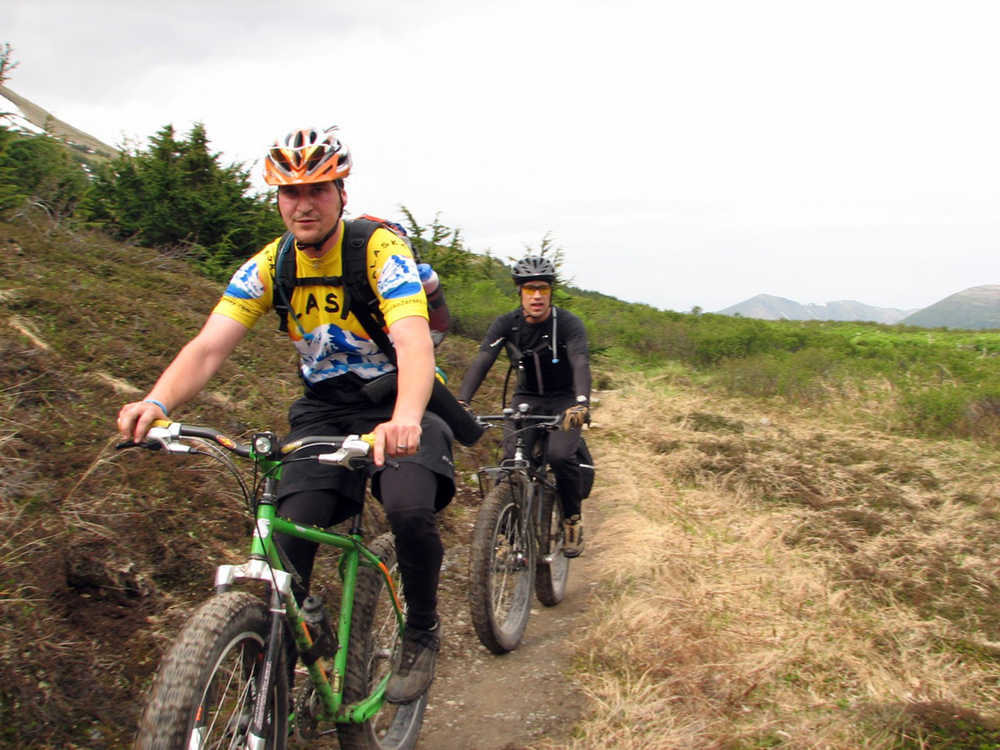There’s a new trend in mountain biking: Fat is in.
Not the riders. The tires.
Big, puffy tires that look like something NASA developed in case someone ever wanted to ride on the moon.
Yes, they look a little strange, but these fat-tire bikes have a smooth ride, even over the toughest terrain, and are an awful lot of fun to ride.
“You look at them and go, they’re kind of goofy, but once you ride one, it’s kind of hard to go back to a traditional mountain bike because of the additional stability and grip that you get,” said Greg Smith, an enthusiast who started the website Fat-Bike.com.
Fat-tire bikes have been around for decades; photos from a 1982 Iditasport race in Alaska show a bike with two wheels welded together for an easier ride over the snow.
The bikes started to become popular in the early 2000s in places where riders wanted to combat the snow, like Alaska and the Midwest, particularly Wisconsin, Michigan and Minnesota. Riders also took up fat-tire riding in sandy areas of New Mexico, Texas and Colorado.
The trend has spread across the country, spurred by major manufacturers jumping into fat-bikes around 2010.
Now the puffy-tired rides are the fastest-growing segment of the bicycle industry and can be found from the deserts of Arizona to the beaches of Florida.
“It’s the ultimate adventure bike,” said Billy Koitzsch of Arctic Cycles in Anchorage, Alaska. “It’s just a lot of a fun being able to go over more obstacles. Your height and width profile are going to be able to get you over rocks with more ease.”
Stability is the key component.
Regular mountain bikes have tires 2 1-2 inches or less in diameter, which works well on trails or dirt paths. But those tires also tend to slide out from under riders on corners when there’s anything loose on the trail like gravel or sand. They also get bogged down when the terrain gets softer, as with snow or heavy sand.
Fat-bike tires are 4 to 5 inches in diameter, looking like someone put dirt-bike tires on a mountain bike. The wider base puts more rubber on the ground, providing extra stability and traction. Fat-bike riders also use lower pressures in the tires, which adds balance and grip.
“It’s like a mountain bike on steroids,” said Smith, who lives in Milwaukee. “You can’t just put these tires on a traditional mountain bike because there isn’t enough clearance, but the basic mechanics are the same, just enlarged to take that bigger tire.”
In the early days, fat-tire bikes were homemade contraptions by riding enthusiasts who sewed tires together and welded or pinned regular rims into one bigger one. They also took welding torches to frames and forks, creating extra space to accommodate the puffy treads.
The fat-bike industry took a big leap forward in 2005, when Surly introduced the purple Puglsey, which had 65-millimeter rims and the 3.7-inch Endomorph tire.
By 2010, nearly every major bike manufacturer had a fat bike on the market. Now, there are three-wheeled varieties, smaller versions for kids — the aptly-named Fatboy — and even fat-tire unicycles.
Riding groups have taken up the fat-bike craze, often riding in large groups along beaches or across the snow, and there are fat-bike races, including 1,000-mile Iditasport races across the snowy tundra of Alaska.
“It brings people back to cycling: ‘Oh, I used to do that, that was fun,’” said Koitzsch, who has been offering guided fat-bike rides since 1996.
ONLINE:

